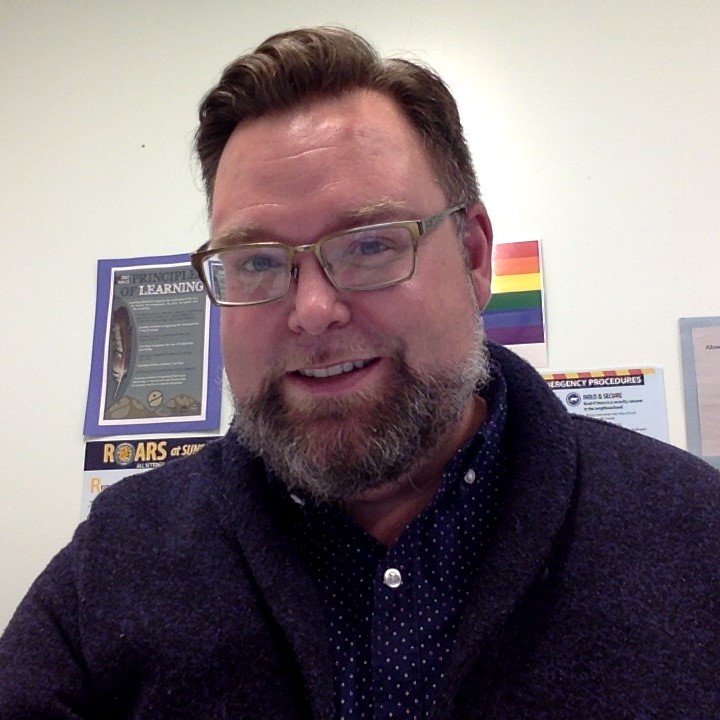Transformative Educational Leadership Journal | ISSUE: Fall 2020
When a Principal or leader is assigned to a new school, where do they focus attention when trying to understand a school culture and climate? How is trust and integrity built? This article suggests that leaders need to listen to the words and narratives used in the school community, then respond with curiosity and adaptive expertise. By Jody BillingsleySchool communities have a personality, a signature that narrates what values exist within the learning organization. Getting to know the personality of a place takes time, and in our current education system principals/principal teams are frequently shuffled to new schools before being fully inducted into a school’s culture.
By consequence, new innovations, changes, and transformational practices may be rushed and not implemented well. Knowing this, when an educational leader is assigned to a new school, where do they focus attention when trying to understand a school culture and climate? How is trust and integrity built? I posit that educational leaders need to listen to the words and narratives being shared within a community and respond with appreciative inquiry, honour adaptive expertise, and create moments of collaborative decision making. The lived experiences of the people in the learning community demonstrate a school’s values and beliefs. Learning to listen carefully to the stories living within a school’s culture is paramount to understanding context. The goal of learning a school culture may seem simple, but the unpacking process is complex, as you need to be mindful and sensitive to the nature of story: stories are rooted in real and sometimes unexamined feelings, complexities, and personal experiences. The community within a learning organization is complex and “can be thought of as complexes of stories, thoroughly interrelated and constantly interacting. Therefore, the nature and function of story provides another lens for understanding how to create healthy, sustainable communities” (Cajete, 2015, p. 107). While listening to these stories, we must check personal biases, acknowledge privileges, and avoid jumping to judgmental conclusions. The unpacking should foster a desire to collaboratively move a learning organization in a direction that puts learning and well-being for all educational partners (students, teachers, families and the wider community) at the forefront. Although there may be a number of indicators to identify and unpack school culture and climate, what follows are four “unpacking culture and climate suggestions”, coupled within the Spiral of Inquiry framework (refer to figure 1), for any educational leader newly assigned to a school. They can be used mindfully to unpack culture and climate – listen with open ears and feel with an open heart. As Dr. Blye Frank stated during a TELP Living Case Study (2019), “You must listen to the stories people are telling about you, and your culture, and then you must influence the stories”. Figure 1, The Spiral of Inquiry (Halbert & Kaser, 2017, p. 6)
Suggestion #1: When scanning, listen carefully to narratives being told about the learners
As with any learning organization, be weary of operating in a space that promotes, whether intentionally or hegemonically, deficit-styled sorting language over appreciative-styled learning language. Listen carefully to the stories being told about the children, particularly those who are considered “vulnerable”. As educators (referring to anyone in a learning organization) are natural caregivers and most likely entered the education field with the mission to make a difference for learners, conversations are undoubtedly from a place of care. However, be mindful of those unintended deficit narratives and microaggressions:the everyday verbal, nonverbal, and environmental slights, snubs, or insults, whether intentional or unintentional, which communicate hostile, derogatory, or negative messages to target persons solely on their marginalized group membership. In many cases, these hidden messages may invalidate the group identity or the experiential reality of target persons, demean them on a personal or group level, communicate they are lesser human beings, suggest they do not belong with the majority group, threaten and intimidate, or relegate them to inferior status and treatment (Wing Sue, 2010, para. 2).It is simple, albeit wrong, to place blame on the “other”. It is far more important for a learning organization to look within and ask what ways are the people within the organization contributing to the issue and then look at ways to move to a strength-based approach. A deficit vocabulary when discussing anyone in a learning organization should be countered with curiosity and thoughtful action to support appreciative inquiry that leverages the whole learner and supports universal design.
Suggestion #2: When Focusing – look at the learning organization’s vision and how it is reflected in student data
All learning organizations need a vision to guide their practice and the types of data collected to inform where to move its learners. When a vision is not established, too many competing needs are in place and there is no cohesion. Thus, resources and expertise are fragmented and too exhausted to meet the competing needs. Without a shared direction, schools are not moving. A co-constructed shared vision provides ownership and a compass to help guide a community toward a common destination. When a school has a shared vision, “it gives it a sense of direction and serves as a motivating force to sustained action to achieve individual and school goals” (OECD Brief, 2019 p. 2). In contrast, when a school does not have a direction it “becomes a weather vane, with everyone dizzy and disoriented about where to head” (Peterson, 2002, p. 133). As part of unpacking the culture and climate, assess whether or not your learning organization needs to review or rewrite its vision. Looking at student learning data is a key place to begin. Does the data reflect the values and tenets of the organization’s vision? Is it the correct data? How is the data being used? Having data-informed conversations about where to move a learning organization is so important for focusing resources and time. It can leverage adaptive expertise, appreciative inquiry, and can permit the organization to pivot their vision compass toward something new. One collaborative tool educational leaders can use to determine whether or not there is need to revisit a vision is the OECD’s (2016) Schools as Learning Organizations Seven action oriented “dimensions”. This tool can help to see where a school’s efforts should be focused (refer to Figure 2). Figure 2, Schools as Learning Organizations Seven Dimensions (OECD Brief, 2016, p. 1) Using a third-party tool, such as the Seven Dimensions, helps to collaboratively focus on a way to improve the learning organization. It helps members of the community to focus their attention on needs and allows for collaborative planning. This tool has been proven useful, especially when there are multiple competing ideas. It also acts as a springboard if you are within an organization that needs to look at collaboratively creating a school vision.
Using a third-party tool, such as the Seven Dimensions, helps to collaboratively focus on a way to improve the learning organization. It helps members of the community to focus their attention on needs and allows for collaborative planning. This tool has been proven useful, especially when there are multiple competing ideas. It also acts as a springboard if you are within an organization that needs to look at collaboratively creating a school vision.
Suggestion #3: New Learning – Listen to past narratives – Does the past impact the current culture and climate?
To help understand the current culture within an organization pay close attention to the kinds of past stories being shared. Are they positive? Do they perpetuate the current climate? Are they fear-based? Do they routinely highlight past stressful events? Are these stories a call for healing? These are questions one may need to ask when entering a new culture and climate. One route to understanding a school’s culture and climate is to pay attention to the words being used, to how the words characterize the people and events within them. Listen to how they describe past stressful events/crises and get curious about the potential of lingering feelings impacting the current behaviours of people within the school. If lingering feelings are a result of past stressful events/crises, it may be necessary to look toward healing before moving forward. Using the First Peoples’ Principles of Learning as a framework may help create a space where stressful events can be acknowledged, processed, and understood. The well-being of the people within the organization may need to be a priority if the culture and climate warrants it.Suggestion #4: New Learning – Build trust by creating space for collaborative decision making
The final suggestion when unpacking culture and climate within a learning organization is to consider creating space to build trust. As with any new assignment, merely sharing the same space does not mean you are part of the community. Relationship building and developing trust is needed first before that can happen. Being transparent when making decisions that may impact the school is imperative, and co-constructing spaces where collaborative decision making is possible can shape this space. For instance, at one school, at a mid-year request of a parent, the principal needed to make a the complex decision about moving a child into a different class. To help maintain the integrity of the request, honour the current teacher, and create transparency, the principal gathered a team and, in collaboration, they built a Consequences Table (refer to figure 3) from Failing et al.’s (2019), The Decision Playbook. The framework helped move the process in a positive direction, as the team assessed values, objectives, and possible outcomes to determine the best decision together. By using this collaborative and action-oriented approach, the family felt heard and all voices were honoured. Making difficult decisions in collaboration builds trust due to the kinds of conversations it requires – transparent, trust building work. Figure 3, Example of a Consequences Table (Failing et al., 2019, p. 38)
Leading with an Open Heart and Open Ears
It is important for educational leaders to note that it will take time to immerse oneself authentically into a school’s culture. One is not simply part of the culture because they are located within the school building. However, educational leaders can positively influence the narratives of a learning organization by- collaboratively developing a common learning language and vision,
- recognizing that past stressful events may continue to influence actions, and
- establishing trust by using a third-party decision-making model.
Cajete , G. (2015). Human Communities are Every Unfolding Stories Indigenous Community: Rethinking the Teachings for the Seventh Fire (pp. 95 - 120). St. Paul, MN: Living Justics Press .
Failing, L., Gregory, R., Long , G., & Moore , B. (2019). The Decision Playbook Making thoughtful choices in a complex world (Teachers' Edition ed.). Vancouver: GutsNHeads Project.
Frank, B. (2019 ). Curiousity and Courage [Lecture notes]. Retrieved from https://canvas.ubc.ca/courses/46181/files/5796805?module_item_id=1440591
Kaser, L., & Halbert, J. (2017). The Spiral Playbook: Leading with an inquiring mindset in school systems and schools. C21 Canada.
MacNeil, A. J., Prater, D. L., & Busch, S. (2009). The Effects of School Culture and Climate on Student Achievement. International Journal of Leadership in Education, 12(1), 73–84. Retrieved July 20, 2020, from https://doi.org/10.1080/13603120701576241
OECD Brief. (2016). What Makes Schools a Learning Organization? A Guide for policy makers, school leaders and teachers. OECD Press. https://doi.org/https://www.oecd.org/education/school/school-learning-organisation.pdf
Peterson, K. (2002). The Shaping School Culture Fieldbook The Jossey-Bass Education Series. San Francisco, CA : Jossey-Bass A Wiley Company.
Wing Sue, D. (2010). More Than Just Race. Phychology Today. https://www.psychologytoday.com/ca/blog/microaggressions-in-everyday-life/201011/microaggressions-more-just-race


